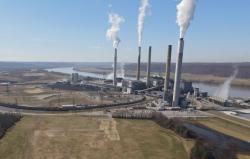
OR WAIT null SECS
© 2024 MJH Life Sciences™ and Turbomachinery Magazine. All rights reserved.
Impact of gas turbine upgrades on balance of plant
Combustion turbine upgrades often prove to be an economical path to add capacity and flexibility to a combined cycle facility or fleet. From aeroderivatives to large-frame machines, nearly all gas turbine OEMs provide upgrade packages for all sizes of turbines.
GE, for example, has recently emphasized turbine upgrades for the GE 7FA gas turbine fleet to increase the maximum output of the engine. While the advantages in terms of projected overall capacity increase are obvious, it takes some investigation and analysis to determine the impact on the Heat Recovery Steam Generator (HRSG) and Balance of Plant (BOP) equipment.
This is particularly important with modern three-pressure reheat HRSGs as the interactions between the different systems and their original design limits can be difficult to assess. Nearly every combustion turbine upgrade changes the amount of energy available for heat recovery. The change may be due to increased exhaust mass flow, higher exhaust temperature, a different mixture or composition of exhaust products or a combination of the three.
Even modifications that do not result in a significant change to the overall exhaust energy (i.e., more mass flow at a lower temperature or vice versa) may have an impact on the HRSG. This is due to the fact that the HRSG was specifically designed based on the original predicted turbine exhaust gas conditions.
Changes to the exhaust stream have different impacts on different machines. Conceptualizing the impact on each section of a modern three-pressure-with-reheat HRSG is difficult as the interactions between the systems can be challenging to reconcile without a computer model.
Accurate performance modeling tools are needed to fully understand the implications. Further, a computer model can be tuned to the as-performing condition of the HRSG and performance shortfalls can be identified to more accurately predict the net change after the upgrade.
Let us take a look at each part of the system and find how turbine upgrades can change the expected performance.
Superheaters
Superheaters are designed to take saturated steam and increase the temperature well above the saturation temperature to raise steam turbine performance. Superheaters are most affected by changes to the exhaust temperature. Due to the cost of tube and header alloys that are suitable for high design temperatures and pressures, most OEMs minimize the “extra margin” when finalizing tube selection.
If the boiler design code calculation states a minimum thickness of 0.150” for the design conditions and the metallurgy, the OEM most likely provided a 0.150” minimum wall tube. Often the numbers do not work out quite so nicely; the calculation may require a 0.145” wall tube, but the standard tube thickness that meets this requirement is 0.150” minimum wall. In this case, the OEM would likely provide the 0.150” minimum wall tube rather than ordering a specialized mill run, thus have some extra margin in the design.
Evaporators
Evaporators serve to generate steam from a feedwater supply stream. The amount of heat transfer surface area is selected to provide a specified amount of steam generation at a set of design conditions. In units with duct burners, the steam generation is usually defined by the fired conditions.
When a turbine is modified, the evaporator may generate more steam than it did originally, particularly if duct burners are fired to the same duty. In this scenario, it is possible to exceed the rated steaming capacity of the unit. Thus proper precautions to limit duct firing must be implemented.
Units without duct burners were not designed for an increase in steam flow above that predicted in the lowest ambient full load case since there is not a mechanism (duct burner) to increase the energy to the system.
As a result, a turbine upgrade that increases capacity may require reduced load operation or turbine runbacks in certain conditions. Rerating the HRSG, and any modifications dictated by the rerating evaluation, may be required in these situations.
Read more in the November-December 2014 issue of Turbomachinery International.
(Jonathan Aurand is Analysis Manager at HRST, a company specializing in the inspection, analysis and upgrade of existing gas turbine HRSGs. Its engineers, designers and technical advisors tackle inspections, problem investigations and design upgrades on over 200 HRSGs per year worldwide. For more information, visit www.hrstinc.com or call/email (952) 767 8100, WHO@hrstinc.com.)



